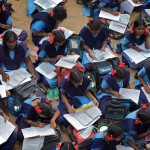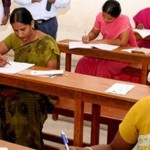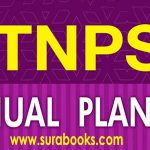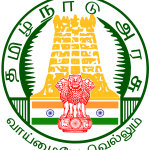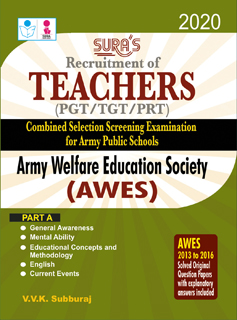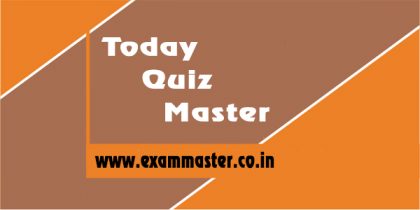
1. Choose the incorrect pair regarding the Tribal revolts
A) The Ahom’s Revolt – 1828
B) Khasi Rising – 1833
C) Santhal Risings – 1840
D) Kol Risings – 1831
Explanation : Ans : (C)
The Kol uprising (1831–32) :
The Kol tribes who inhabited in Chottanagpur and Singhbum regions of Bihar and Orissa rose in revolt, when their lands were leased out to outsiders. The tribals, irked by this act, started attacking the properties of the outsiders but not their lives. The leaders who spearheaded the rebellion were Buddha Bhagat and Bhindari Manki, while the former was killed, the later surrendered on 19th March 1832.
Santhal Rebellion (1855–56) :
Santhals also called Manjis lived in the forests of Bengal, Bihar and Orissa. They had cleared a large areas of forests to eke out their living. But these lands were leased out to outsiders. This infuriated the tribals. When their ultimatum was unheeded, in July 1855, thousands of Santhals armed with bows and arrows indulged in open insurrection. The rebels included a considerable number of women. Initially, the revolt was spearheaded by one ‘Sido’ Later the revolt was led by Kanoo. The revolt led to heavy causalities. However it was suppressed.
2. The Chairman and the members of National Human Rights Commission are appointed by the President and the recommendations of the Committee which consist of ………. members.
A) Five members B) Six members
C) Ten members D) Eighteen members
Explanation : Ans : (B)
The National Human Rights Commission is a statutory body. It was established in 1993 under a legislation enacted by the Parliament, the Protection of Human Rights Act, 1993. This Act was amended in 2006.
The Commission is the watchdog of human rights in the country, that is, the rights relating to life, liberty, equality and dignity of the individual guaranteed by the constitution or embodied in the international covenants and enforceable by courts in India.
The NHRC Act was further amended in July 2019. Accordingly,
Composition of NHRC : Under the Act, the chairperson of the NHRC is a person who has been a Chief Justice of the Supreme Court. The Bill amends this to provide that a person who has been Chief Justice of the Supreme Court, or a Judge of the Supreme Court will be the chairperson of the NHRC.
The Act provides for two persons having knowledge of human rights to be appointed as members of the NHRC. The Bill amends this to allow three members to be appointed, of which at least one will be a woman. Under the Act, chairpersons of various commissions such as the National Commission for Scheduled Castes, National Commission for Scheduled Tribes, and National Commission for Women are members of the NHRC. The Bill provides for including the chairpersons of the National Commission for Backward Classes, the National Commission for the Protection of Child Rights, and the Chief Commissioner for Persons with Disabilities as members of the NHRC.
Chairperson of SHRC : Under the Act, the chairperson of a SHRC is a person who has been a Chief Justice of a High Court. The Bill amends this to provide that a person who has been Chief Justice or Judge of a High Court will be chairperson of a SHRC.
Term of office : The Act states that the chairperson and members of the NHRC and SHRC will hold office for five years or till the age of seventy years, whichever is earlier. The Bill reduces the term of office to three years or till the age of seventy years, whichever is earlier. Further, the Act allows for the reappointment of members of the NHRC and SHRCs for a period of five years. The Bill removes the five-year limit for reappointment.
Powers of Secretary-General : The Act provides for a Secretary-General of the NHRC and a Secretary of a SHRC, who exercise powers as may be delegated to them. The Bill amends this and allows the Secretary-General and Secretary to exercise all administrative and financial powers (except judicial functions), subject to the respective chairperson’s control.
Union Territories : The Bill provides that the central government may confer on a SHRC human rights functions being discharged by Union Territories. Functions relating to human rights in the case of Delhi will be dealt with by the NHRC.
3. Fiscal deficit is equal to
A) Revenue receipts + Capital receipts – Total expenditure
B) Market borrowing and other liabilities
C) Revenue receipts – Interest payments
D) Revenue receipts + Investment
Explanation : Ans : (A)
Budget deficit is a situation where budget receipts are less than budget expenditures. This situation is also known as government deficit.
Budget deficit is of four major types :
Revenue Deficit : It refers to the excess of the government revenue expenditure over revenue receipts. It does not consider capital receipts and capital revenue.
Budget Deficit : Budget deficit is the difference between total receipts and total expenditure (both revenue and capital)
Budget Deficit = Total Expenditure – Total Revenue
Fiscal Deficit : Fiscal deficit (FD) = Budget deficit + Government’s market borrowings and liabilities.
Primary Deficit : Primary deficit is the difference between fiscal deficit and interest payments. It shows the real burden on the government and it does not include the interest burden on loans taken in the past.
4. According to the world meteorological organisation cyclone is recognised when the wind speed exceeds
A) 63 kph B) 70 kph
C) 75 kph D) 100 kph
Explanation : Ans : (A)
Stages of Development of Tropical Cyclone :
According to the World Meteorological Organisation classifies the low pressure systems in to vary classes based on wind speed.
Tropical Disturbances
Tropical depressions Low winds with a speed between 31 and 61 km ph.
Tropical cyclone wind speed from 62 to 88 km ph and it is assigned a name (Cyclone)
Severe Cyclonic Storm (SCS) wind speed is between 89 to 118 km ph.
Very SCS wind speed between 119 to 221 km ph and
Super Cyclonic storm when wind exceeds 221 km ph.
5. The neutrino has
A) Negative charge and half spin
B) Zero charge and half spin
C) Positive charge and integer spin
D) Zero charge and integer spin
Explanation : Ans : (B)
A neutrino is a subatomic particle that is very similar to an electron, but has no electrical charge and a very small mass, which might even be zero.
Neutrinos are one of the most abundant particles in the universe.
It has zero charge and half spin.
It interacts very weakly with other matter particles. So weakly that every second trillions of neutrinos fall on us and pass through our bodies unnoticed.
Neutrinos come from the sun (Solar neutrinos) and other stars, cosmic rays that come from beyond the solar system, and from the Big Bang from which our Universe originated. They can also be produced in the lab.
Neutrinos come in three types or “Flavours” – electron neutrino, tau neutrino and muon neutrino.
They change from one flavour to another as they travel. This process is called neutrino oscillation.
Neutrino oscillation was established by sudbury Neutrino Observatory, Canada, and Super-Kamiokande experiment in Japan. They studied solar neutrinos, atmospheric neutrinos and man-made neutrinos.
The India-based Neutrino Observatory (INO) will study atmospheric neutrinos only. Solar neutrinos have much lower energy than the detector can detect.

